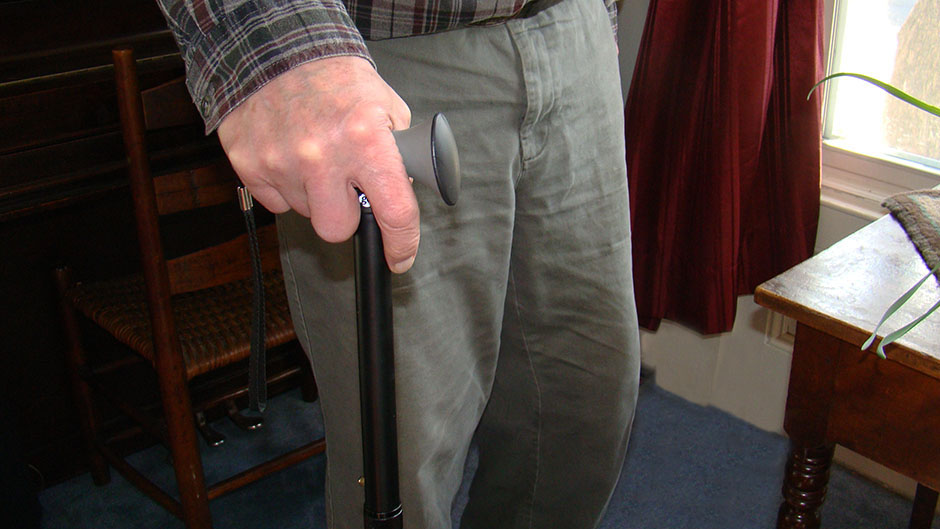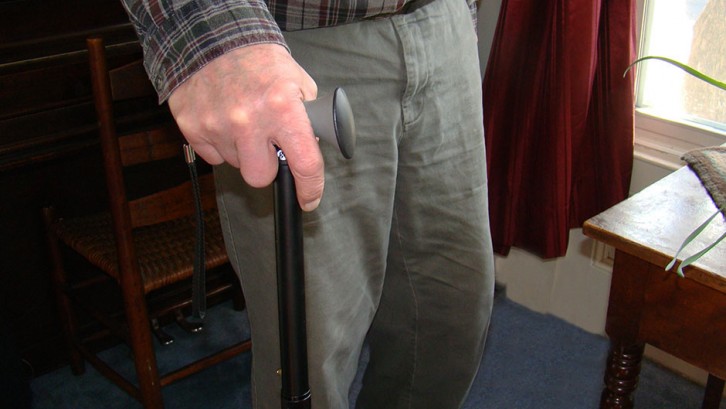Long-term care
Right to fall means fewer restraints in Halifax nursing homes
Nova Scotia nursing home takes a closer look at belting residents

caption
Nova Scotia ranks second among provinces for number of long-term care beds per 1000 people age 75 plus.
caption
Nova Scotia ranks second among provinces for number of long-term care beds per 1,000 people age 75 plus.As restraints come off, Nova Scotia seniors face the risk of bruises and broken bones from hitting nursing home floors.
“My philosophy is residents have a right to fall,” says Ken Rehman, director of resident care at Saint Vincent’s Nursing Home in Halifax.
Saint Vincent’s is in the process of evaluating the belts that keep seniors positioned in chairs to determine if these belts are really restraints.
The nursing home on Windsor Street has a least-restraint policy, which means residents are only restrained when all other options have failed. Currently, less than one-third of Saint Vincent’s 149 residents are in restraints. Rehman hopes to see this number drop after the review.
In Nova Scotia, the least-restraint policy became mandatory for the 89 licensed long-term care homes in 2007.
The policy is meant to ensure there is a balance between patient care and the rights of the approximately 7,000 nursing home residents in the province.
Nursing home staff must try all alternatives before a restraint is used. A restraint can only be put in place with consent from the resident or written consent from the family.
Saint Vincent’s recently tweaked its restraint policy, involving families directly in meetings about restraints and alternatives.
At Saint Vincent’s, alarms, motion detectors, and special pads on chairs are all used to alert staff when someone is on the move. Residents who are eager to move but need assistance are taken for walks and can take part in recreational activities.
“You cannot stop all falls,” Rehman says. “It’s a fact that (seniors) do fall, but you try to prevent injuries from falls.”
Restraint free
Not all nursing homes use restraints.
Alarms often ring throughout Harbour View Haven nursing home in Lunenburg, N.S., says Jeff Skinner, manager of staff and resident safety.
The 144-bed facility uses personal alarms and other devices to alert staff of resident movement. Hip protectors (padded undergarments) are worn by some residents to absorb the shock of a fall.
“It doesn’t prevent all falls. We still accept that there are going to be people that are going to fall,” Skinner says.
Skinner feels restraints are against residents’ rights. He says they can be dangerous too, because they can agitate residents and that can lead to strangulation if a resident struggles to get out.
Provincial nursing homes need to have a documented falls prevention program. At Harbour View Haven, a risk team works with someone who is frequently falling. The team strategizes how to decrease the number of falls.
Skinner says the facility’s restraint-free policy can be hard on family members.
“It’s not an easy thing if you have a loved one and they’re falling,” he says, “ and you think the safest thing is to restrain somebody.”
The health risks
Teresa Andrews, director of facility and resident care at Annapolis Royal Nursing Home Ltd., says the home would prefer to use no restraints, but it does.
Andrews agrees residents have a right to be mobile but says there is a risk of head and brain injuries.
“When somebody falls and hits their head then that becomes more of an issue,” she says.
How serious are these falls?
Chris MacKnight, a professor of geriatrics at Dalhousie University, says most falls don’t result in a significant physical injury but can result in bruising. Fewer than 10 per cent of falls will result in a hip fracture or brain injury, he says.
When injuries do occur they aren’t cheap.
The Public Health Agency of Canada reports that $2 billion is spent annually on the direct health-care costs of falls by seniors. Not all of these falls occur in nursing homes, but 40 per cent of the falls led to nursing home admission.
MacKnight says if a nursing home resident is injured they are worse off than seniors living outside of long-term care.
“People in nursing homes are much more frail in general than (seniors) who live in the community, so of course if they are injured the impact of that injury is going to be much more significant.”
In a 2013 report on senior falls, the Public Health Agency of Canada states that nearly 60,000 seniors living in long-term care were hospitalized after falls from 2006 to 2010.
The report also says adults living in long-term care tend to have more complex health issues that put them more at risk of falling and sustaining a fall-related injury. One of the health issues the report mentions is advanced dementia.
Many of the seniors in restraints at Saint Vincent’s have some degree of dementia, Rehman says.
‘They still have rights’
So what happens when people aren’t cognitively aware?
“That’s the sticking point. That is where a lot of the debate comes up,” Rehman says.
At Harbour View Haven in Lunenburg, seniors with dementia have the same rights as other residents.
“Even if someone has dementia . . . they still have rights as a human being and if in their mind they want to be mobile then we have to respect that right,” says Skinner.
Residents with dementia have a chronic disorder of the mental process. Skinner believes people have misconceptions about those with dementia.
“They are not a child, they are an adult with a disease which is no different than cancer or a broken leg,” he says. “They can’t control the way they are. If they could speak for themselves . . . most people aren’t going to say, ‘Belt me in a chair (or) tie me in place’.”
Rehman says he has had success in the past creating a home for seniors with hardly a restraint in place. He says in a previous facility the number of restrained residents was 34 out of 174, but by implementing alternatives to restraints, that number went down to one person.
“It can be done, it just takes a lot of work,” Rehman says.
The work to find alternatives to restraints falls to staff. An unrestrained resident with mobility issues may need to be checked on more often or taken for a walk.
Skinner says restraints may make it easier for staff but aren’t best for residents.
As staff at Saint Vincent’s look at belt use, Rehman wants to give residents living in his facility the same rights he’d want.
“They have a right to get up, they have a right to live with those risks of falls,” he says. “If it was myself in that chair I’d rather live with the risk of having that fall that’s going to break my hip as opposed to taking away my independence and my ability to walk.”
About the author

Payge Woodard
Payge is a master of journalism student at the University of King's College. She's interned for Bangor Daily News in Maine and freelanced for...
